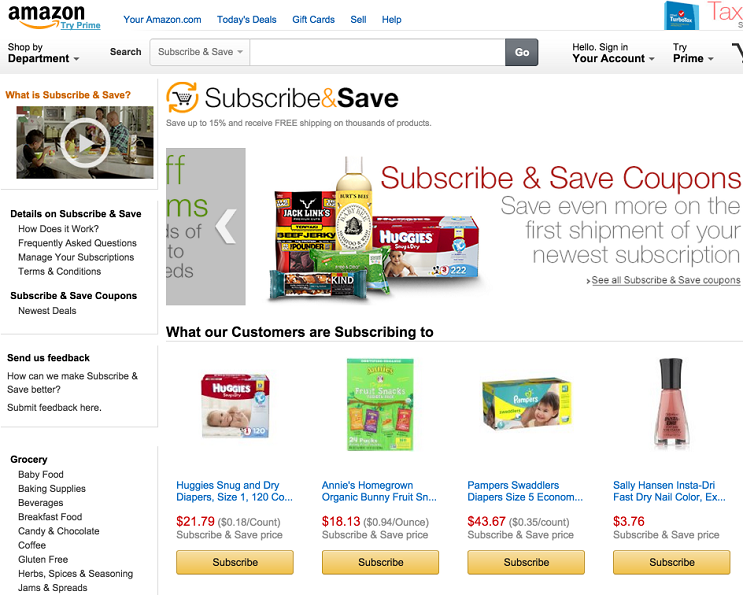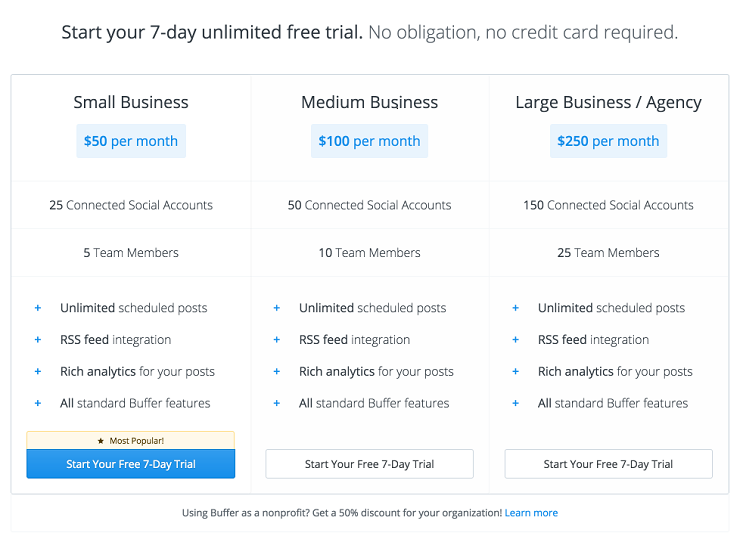Tips To Dramatically Improve Your Recurring Billing Program
- Fahad H

- Feb 13, 2015
- 6 min read

Recurring billing is the holy grail of SaaS (Software as a Service) revenue. I advise any startup with SaaS to implement recurring billing into their marketing plan. It is, quite frankly, the best way to boost profits and create a steady stream of month-over-month revenue.
I’m not looking at it simply from a selfish standpoint as a business owner. I’m looking at it from the customer’s viewpoint. Mark MacLeod, SaaS startup guru, makes the point that vendors love recurring billing. Check out his comments:
As he points out, it’s “predictable, less lumpy.” The idea of a low fee billed monthly is the perfect balance to the alternative of major, budget-destroying lump sums that some software services demand. Plus, it reduces risk. Most customers want to forecast their monthly costs and avoid lurches and dives in capital expense. A simple and predictable operating expense makes for a clean and reliable business model.
Nearly any business can do recurring billing. Socks, razors, undies? Manpacks does it with recurring billing:

Amazon.com uses recurring billing in its “Subscribe & Save” program to sell regular, ongoing shipments of a wide variety of products, from household items to beauty supplies to groceries.

If it makes sense for the type of products and services you sell, it is absolutely worth considering a recurring payment model. Now, all you need are some killer tips that will dramatically improve your recurring billing model.
(Please note: The tips below are written with SaaS providers in mind, but many can be applied to e-commerce businesses with physical products as well.)
Make Recurring Prepay Billing Standard
Too many options can paralyze choice, especially when it comes to billing.
For SaaS billing, there should only be one option: Prepaid recurring billing. Here’s what Buffer offers for their business plans:

Notice how they don’t muck up the options with prepayment vs. non-prepayment, recurring vs. lump sum, etc. They just have three plans, and you have to start with the free 7-day trial.
Obviously, you want to provide the method that will best satisfy your customers. Many customers — perhaps even most — will likely prefer a recurring prepayment model. Since this is also in the best interest of your business, then it’s a logical choice. Whatever method you choose, make recurring standard, and eliminate all other options.
Signup Should Be Simple
The harder it is for customers to sign up, the fewer customers will sign up. This is simple conversion optimization common sense, but it is especially critical for recurring billing.
A great strategy is bringing the customer through a multi-step conversion funnel, beginning with the email address and culminating in a download or purchase.
Here’s how ChargeBee begins their signup process. This is as simple as it gets:

You may wish to eliminate credit card information during a free trial period in order to reduce risk and add trust.
Create A Fair Price Point For Recurring Billing.
Price and benefits are the two most critical choice motivators in making a purchase. Obviously, a lower price will help to motivate customers to go for the recurring billing option. But you don’t want to slash prices too low.
The greater the hard benefits in terms of measurable, recurring cost reduction or revenue generation, the greater the price that can be charged, according to Mark’s experiences funding SaaS start-up.
If your price is high, then you should justify it through the benefits you provide. But by all means, don’t shy away from a high and fair price.
Go Monthly
There’s really no other billing period that makes sense. Weekly? Way too short. Nobody’s going to buy that. Yearly? Way too long.
Basecamp learned that monthly billing was the best way after an arduous struggle with annual fees. They originally thought that a nice, flat yearly fee sounded cool. Here’s how Jason described it:
“At first we wanted to sell Basecamp with a flat yearly fee. $99/year, $149/year, $199/year. We thought it would be easier for customers to just pay once a year instead of every month. So we built the internals to support such a sales cycle.”
Eventually, they learned — monthly recurring was best.
“We had to rejigger our entire business model. Instead of billing annually we had to switch to billing monthly. It turned out to be considerably more lucrative for us, and considerably more comfortable for our customers too. More revenue for us, lower cost of entry our customers. Instead of having to pony up $99 up front, they could pay $12/month for as long as they wanted. No contracts, no lock-in, no big initial investment on their part.”
See that? Better for your business. Better for the customer. It’s a classic win-win.
Now their subscription model is “Pay-as-you-go, No-Contract Monthly Packages,” (although they do offer an annual package as well, for some reason).

Support As Many Payment Types As Possible
The more payment methods you accept, the more likely you are to gain more users. Some businesses do weird things like refusing to use PayPal or only using a checking account.
You can accommodate them. There are a variety of subscription-solution providers to choose from, so find one that accepts as any payment types as you’re going to need.
PaySimple.com makes this point in their article on recurring billing software:
What Payment Types Do You Want to Accept? Do you want to accept credit card payments? If so, which types? Do you also want to accept ACH payments? Do you want to accept any alternate payment methods such as PayPal? It’s important to find recurring billing software that supports all of the payment types you want to accept.
PayPal makes it easy to set up automated billing. You don’t have as much control over the invoice and payment detail issues, but some customers really prefer PayPal.

Explicitly Inform The Customer That Recurring Billing Is In Place
If you make it very, very clear that the customer will be charged monthly, then you’ll have fewer complaints, cancellations, and demands for refunds.
Whatever you do, make sure that the customer knows what they’re doing. The whole idea behind recurring billing is to make things simple for the customer and for you. When you complicate it by being sneaky, you’re going to end up with more problems than benefits.
Motivate Them With A Free Gift
If your customers need a nudge, give it to them. A gift may be important if your target customers aren’t accustomed to a monthly recurring model.
If you’re concerned about the potential cost of a free gift, think of it this way. How much more revenue are you going to make month after month, year after year, if you use a recurring model. Chances are, you’ll be way ahead by motivating a few more monthly recurring customers with an extra ten or fifteen dollar gift.
You can, of course, make your “free gift” non-physical. e-books, extra storage space, premium support, and other perks are a great way to increase prospective customer motivation without breaking the bank.
Provide Choices For The Billing Date
Many business can be pretty exacting about which day of the month they want to be billed. That’s fine. Give them options.
I recommend keeping your model as simply as possible, of course, so you probably don’t want to build this option directly into your checkout process. Instead, provide a line somewhere in the process that reads “Need a different billing date? Send us an email, and we’ll see what we can do!”
Provide Refunds But Set Limits
Some customers are going to want refunds. It’s unavoidable. I recommend that you have some level of guarantee or refund in order to add a layer of trust signals to the purchase.
With recurring billing, however, your options for refunds are limited. Your recurring billing service provider may set the limits for you. If not, then your policy can be to only provide a refund for the past month of service. This protects you from being gouged by a longtime customer who is demanding a refund for multiple months of regular service.
Provide Friendly Reminders For Each Invoice
Be sure that you’re sending out invoices regularly for each customer. In the invoice, use a friendly tone. Invoices don’t need to be harsh documents with charts and dollar signs.
All you need to do is send a quick email with a line or two about how you appreciate their business. Then, attach the actual invoice as a PDF. Since most customers and businesses prefer PDF invoices anyway, this makes it easy for them to download the invoice and file it.
An email reminder, bereft of the cold data of billing information, is a much softer way to keep them informed.
Point Out When The Next Billing Date Will Be In Each Invoice
Each invoice should contain clear information on when they will be next billed. This information makes it easy for businesses to conduct monthly forecasting, and avoid nasty surprises.
Promise (And Deliver) More Stuff And Better Stuff In The Future
One way to compel recurring customers to stay in the game is by promising to give them more stuff and better stuff. If you promise it, be sure to deliver it.
This is one of the reasons for Amazon’s success. They have a killer recurring program, and customers want to stay in it because of the accruing benefits.
Conclusion
For many businesses, recurring billing is the way to go for more powerful and consistent revenue streams. If you haven’t yet moved to a recurring billing model, don’t waste any time getting started. And if you have concerns about how to get customers on board, hopefully this article will leave you with some great tips.
What is your experience with recurring billing?








Comments